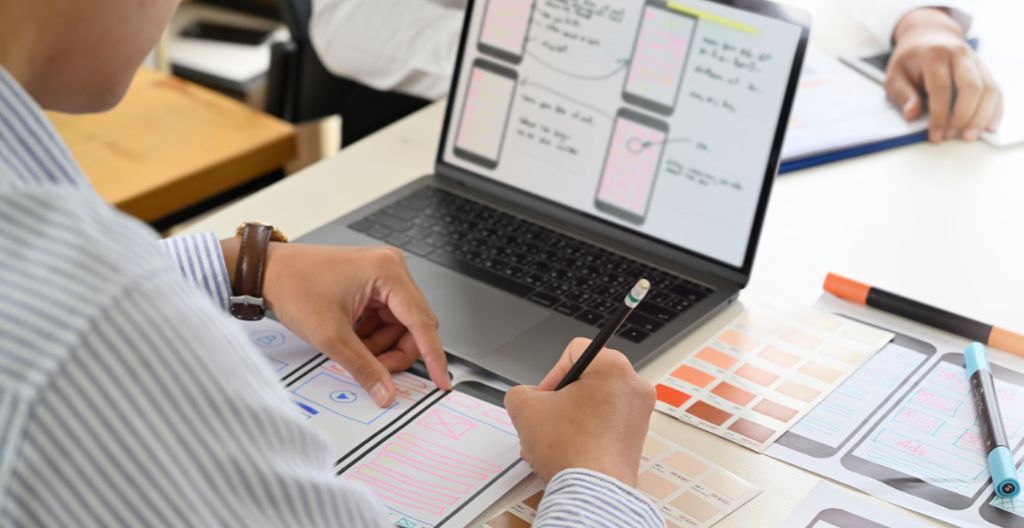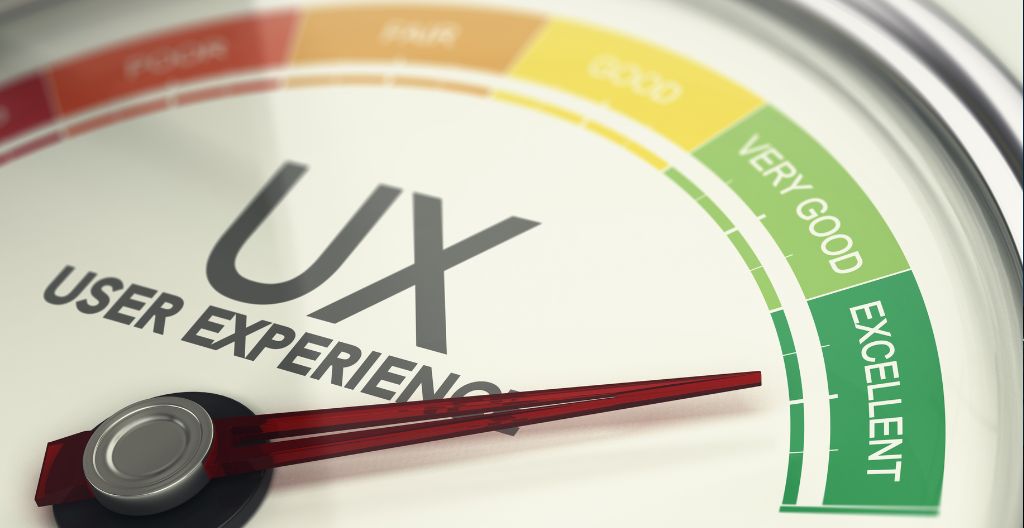In an era where customer satisfaction is paramount, understanding User Experience (UX) design is vital for business success. This article explores the concept, significance, and role of User Experience Designer in product development, and how it shapes customer experience.
We’ll delve into the complexities of UX design, address common challenges, and underscore the value of robust UX goals. Armed with these insights, businesses can enhance their product value and foster meaningful connections with their users.
Key Takeaways
- UX design is the process of creating products that provide meaningful and relevant experiences to users.
- UX designers consider the entire user experience, including pleasure, efficiency, and fun.
- UX design is a multidisciplinary field that involves tasks such as user research, creating personas, and testing designs.
- UX design is not solely about usability but also about meeting user needs in the specific context of product use.
Understanding the Concept of User Experience (UX) Design
The concept of User Experience (UX) Design revolves around crafting meaningful, relevant, and user-centered experiences throughout the entire process of acquiring and integrating a product, thereby addressing specific user needs and pain points. In understanding the UX meaning, it’s crucial to acknowledge that it’s not merely about creating an attractive interface but also ensuring that the user’s journey through the product is intuitive and satisfying.
So, what does UX stand for? It stands for a holistic approach that considers all aspects of a product from the user’s perspective.
In terms of what is UX and UI, while UX focuses on overall user satisfaction and product functionality, UI, or User Interface, is about the look and layout of the product, making it a subset of UX design.
The Distinction Between UX and UI Design
Diving into the realm of digital design, one must understand that User Experience (UX) and User Interface (UI) are two distinct, yet interconnected, fields.
UX focuses on the overall functionality and user satisfaction, ensuring a product is user-friendly, efficient, and enjoyable. It is about solving user problems and needs, making their interaction with the product as simple and efficient as possible.
On the other hand, UI emphasises the aesthetics and layout of a product. The UI designer enhances the product’s presentation and interactivity, making it visually appealing and engaging for users.
Both disciplines, UX and UI, are crucial to product success and work closely together. The UX designer’s role is to ensure a seamless user experience, while the UI designer focuses on creating a visually pleasing interface.
Understanding the differences between UX and UI is key to properly utilising them and ultimately creating a balanced and harmonious product.
The Role of UX Design in Business Success
In the realm of business, an understanding of UX design’s pivotal role becomes instrumental in achieving ultimate success, by ensuring customer satisfaction through intuitive, efficient, and enjoyable product experiences.
UX design transcends aesthetics; it focuses on functionality and usability, which significantly influence customers’ perceptions of a brand, product, or service. By identifying users’ needs and preferences, businesses can tailor their offerings to provide seamless, personalised experiences, fostering customer loyalty and retention.
Furthermore, a well-executed UX design can streamline operations, improving efficiency and productivity. As the digital landscape continues to evolve, businesses that prioritise UX design will likely maintain a competitive edge, driving growth and profitability.
Hence, UX design is not merely a design consideration, but a strategic business decision.

Recognising and Overcoming Challenges in UX Design
While grappling with multifaceted challenges in UX design, designers must remain adaptable and innovative, employing effective strategies to overcome obstacles and continuously enhance the user experience.
Key challenges include maintaining user-centricity amidst business constraints, ensuring accessibility, and handling the ever-evolving technology landscape. Designers must skilfully balance business objectives and user needs, advocating for the user without compromising the product’s purpose.
Ensuring accessibility requires a comprehensive understanding of diverse user abilities and limitations, making the design inclusive.
With rapid technological advancements, designers must stay updated to leverage new tools and trends effectively. Moreover, remote working necessitates robust communication and collaboration strategies.
Despite these challenges, the potential of UX design in creating meaningful, satisfying user interactions is immense.
The Value of Implementing Strong UX Goals
Establishing and following through with robust UX goals can lead to significant improvements in user satisfaction and business performance. This requires a deep understanding of user needs, meticulous planning, and iterative testing.
UX goals must be clearly defined, measurable, and aligned with business objectives. They should focus on enhancing user engagement, minimising friction, and delivering value.
The implementation of these goals necessitates a user-centered design approach, where user feedback drives the iterative design process. A successful UX strategy involves continuous measurement and refinement of goals based on user interactions, analytics, and performance metrics.
Emphasising UX goals can increase user retention, foster loyalty, and ultimately, boost the bottom line. This proves the immense value of investing in a strong UX strategy.
Conclusion
In conclusion, UX design is paramount in product development and customer experience, focusing on user needs and enhancing satisfaction.
The subtle differences between UX and UI design underscore their relevance in business success.
Acknowledging and surmounting UX design challenges can significantly amplify product value.
Implementation of robust UX goals is therefore instrumental in not only meeting user expectations but also contributing to the overall revenue and growth of a business.
Sign up for our Life Sciences Newsletter and boost your engagement with HCPs
FAQ
How Are UX Design and Technical Design Connected?
Conceptual design forms the initial vision for a product, setting its foundational ideas and goals. UX design builds on this, translating these concepts into practical, user-friendly experiences. Together, they ensure products are both innovative and user-centric.
What is the Relation between UX and the Content Planning Process?
The relation between UX (User Experience) design and the content planning process is intrinsic. UX design focuses on creating products that provide meaningful and relevant experiences to users. In this context, the content planning process plays a crucial role. It involves strategising the creation, delivery, and governance of content that is not only informative and engaging but also aligned with the user’s needs and preferences.
Effective content planning ensures that the content is structured and presented in a way that enhances the overall user experience. It addresses aspects like content hierarchy, readability, and relevance, which are essential for a seamless user journey. By closely aligning content planning with UX principles, businesses can create more intuitive and satisfying user experiences, ultimately leading to increased engagement and satisfaction.

